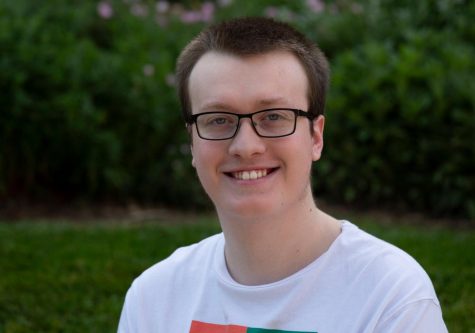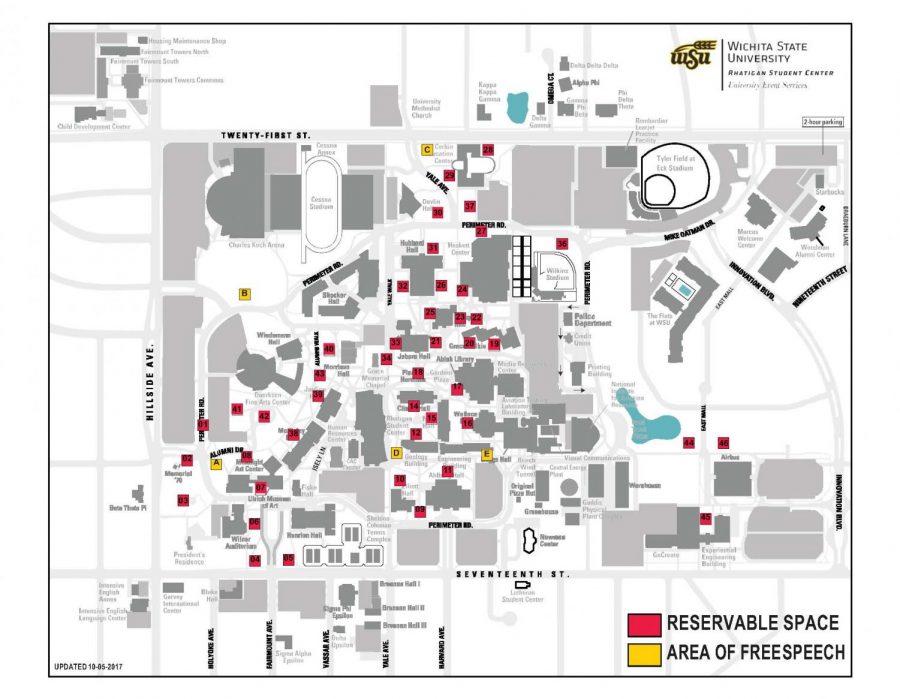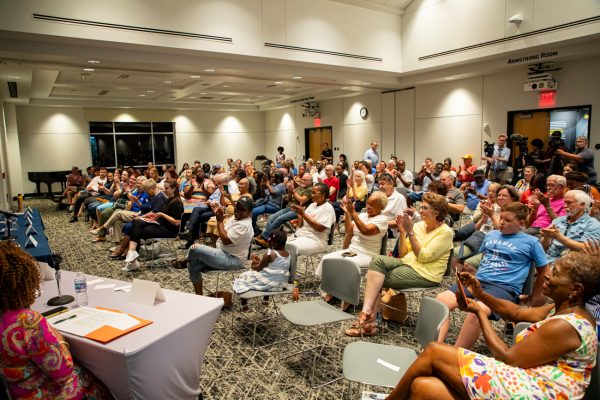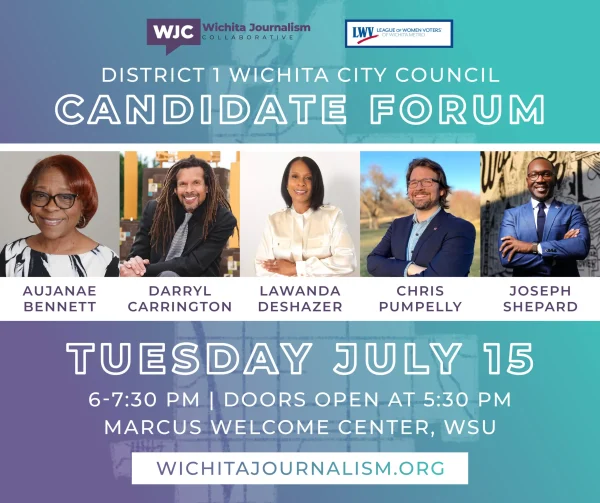What are campus free speech zones?
On Wichita State’s main campus, there are five free speech zones available for “First Amendment activities.”
Free speech zones are a method of designating First Amendment activities such as protests and public forums on college campuses.
In April, the Student Government Association made a controversial decision not to recognize Young Americans for Liberty (YAL), a libertarian student organization with chapters at universities across the country, that advocates for free speech. The decision was met with a considerable amount of backlash, and was overturned by the Student Supreme Court.
“By not passing that resolution, you violated everything you’re supposed to stand for as Student Government,” Vice President for Student Affairs Teri Hall said at the SGA Senate meeting after the decision was overturned.
“You talk about not discriminating, and you discriminated against them.”
Since being recognized on campus, Wichita State’s chapter of YAL has protested free speech zones with free speech balls — an expression of unrestricted speech in which beach balls are passed around campus for the purpose of writing on them with markers.
The group has put on four such demonstrations. The university has intervened once.
“The first time we did it, we were actually confronted by university police,” said Maria Church, a senior and WSU chapter president for YAL.
“We weren’t kicked off campus, but they did examine our ball for hate speech,” Church said.
Church said the university’s response was problematic because a few people were allowed to decide what constitutes hate speech.
“All that the First Amendment encompasses is the foundation of a free society,” Church said. “It is our duty … to protect this most basic freedom.”
Last November, the “No!” protest, a protest following the presidential election organized by graduate student Jesse Allen, was initially designated to one of the spaces on campus that could be reserved for protests.
“It was not an anti-Trump rally,” Allen said. “I wanted to send the message that we’re not going to accept [misogyny] in our community … or on our college campus.”
In order to hold the protest on campus, Allen said she registered it with former University Police Chief Sarah Morris within the proper 72-hour timeframe.
“It was just going to be a couple of us in the Plaza of Heroines,” Allen said. “I thought that, at the most, two dozen people were going to be there.”
Allen said that, despite low expectations for turnout, Morris informed her of conditions set by WSU that could potentially require the protest to relocate to a free-speech zone.
“If more than forty people showed up, [we were told] that we would have to move to a free-speech zone,” Allen said.
The protest was designated to the free-speech zone on the south side of the Rhatigan Student Center, near the Sodbuster statue.
Allen estimated that the protest grew to nearly 150 participants.
Hall spoke about WSU’s policies regarding First Amendment activities, as well as the university’s role in regulating such activities on campus.
“We want to promote free speech,” Hall said. “But we can’t promote free speech that is disruptive to the business of the university.”
According to WSU policy, students who wish to organize a protest on campus should register with the Office of University Event Services at least 72 hours in advance.
Hall said registering the event addresses questions the university may have —such as where the event should be held, how many people will be there, and whether or not amplification devices will be used.
Hall said the university has the power to shut down “First Amendment activities” on campus that are not within the guidelines, but that doing so is generally not the university’s course of action.
“For example, if students held a support rally for shooting victims in Texas, that would have been fine,” Hall said.
Hall recalled a group of students who protested in response to President Trump’s plans to terminate DACA, saying that the university allowed the protest, even though it was not registered 72 hours in advance.
Church said she feared inconsistency in the university’s enforcement of the policy.
“If we have a policy, it has to be a good policy,” Church said. “And it has to be applied unilaterally.”
Church said policies that are not applied unilaterally create the potential of viewpoint discrimination from the university — a fear shared by YAL.
“If we allow a group in support of victims of a shooting, but not a spontaneous rally for or against gun rights at the same time, that can come off as viewpoint discrimination,” Church said.
One group that opposed SGA’s original decision not to recognize a WSU chapter of YAL was the Foundation for Individual Rights Education (FIRE), a group that advocates for free speech on college campuses around the country.
As part of efforts to educate about free speech on universities around the nation, FIRE uses a rating system to gauge universities’ policies on free speech.
The system has three ratings — green light, yellow light, and red light.
According to FIRE’s website, a “green light” rating indicates that none of the university’s policies pose a serious threat to free speech. A “red light” institution has at least one, “clear” restriction that imposes on protected expression.
WSU ranks between the two, as a “yellow light” institution. This rating means that, while there is no policy that “clearly” violates free speech, there is at least one policy that could impede students’ rights, based on its application.
FIRE cites the policy that requires students to register First Amendment activities on campus as the reason for a “yellow light” rating.
Hall said it is important for the university to ultimately promote free speech, because it encourages tolerance and acceptance of differing beliefs.
“Free speech is a pillar of how a university operates,” Hall said. “The hope is that we as a community can listen to differences and be okay with them.”

Daniel Caudill is the former editor in chief for The Sunflower. A staffer at the paper since 2017, Caudill first covered Student Government Association...









April Lemon • Jan 25, 2018 at 9:08 am
The entire campus should be a free speech zone.
Real Shocker • Nov 27, 2017 at 10:00 pm
What happened to the Free Speech zones that used to be north of the RSC and right by the Chapel and the one that used to be west of Grace Wilkie? These were high traffic areas where people want to actually be so it seems those were strategically eliminated and the five areas were moved to the perimeter of campus where there is no foot traffic and no visibility. So much for promoting Free Speech. Hopefully FIRE will not these changes.
Kyle • Nov 27, 2017 at 9:58 am
Daddy?
Kyle • Nov 27, 2017 at 9:58 am
F*** my bussi